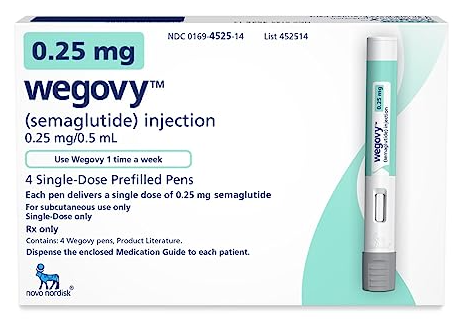Anita Blanchard came to the conclusion that diets don’t work after repeatedly losing and gaining the same twenty-plus pounds.
Blanchard was thus resolved to give Ozempic, a medication created to treat Type 2 diabetes, a go after learning that it helped individuals lose weight and keep it off.
The medication was first paid by the state employee’s health insurance, with Blanchard contributing a $25 copayment. She claimed to have reduced her blood pressure and cholesterol and shed forty-five pounds over the course of the following seven months. However, psychological advantages were the most important.
Blanchard, who is now 60, stated, “It relieved my anxiety, stopped the food noise in my head, and I was no longer drinking like a fish.” “I’d just have a glass of wine and be done.”

Blanchard lost pounds, but North Carolina experienced sticker shock when thousands of people who were enrolled in the state insurance program, which covers over 76,000 employees across 178 agencies and their dependents, attempted to do the same.
According to a North Carolina State Health Plan information sheet, 10% of the state employee health plan’s yearly prescription drug expenditures were for Ozempic and other glucagon-like peptide-1 (GPL-1) agonist drugs. According to the state treasurer, the class of pharmaceuticals will cost the state over $170 million this year and over $1 billion over the following six years.
According to a March statement from the State Health Plan, “this surpasses the amount the State Health Plan spends on cancer, rheumatoid arthritis, and chemotherapy medications.”
Beginning in April, the board of trustees for the health plan stopped covering this class of weight-loss drugs. The medication for the treatment of Type 2 diabetes is still covered by the plan.
However, in a surprising turn of events last August, a different branch of the government permitted the Medicaid program to begin paying for medications for weight reduction, not just diabetes, for the poorest citizens of the state, who are disproportionately impacted by obesity and related conditions. More than two million individuals are covered by the state’s Medicaid program, but public employees like Blanchard are not.
Following suit, the departing Biden administration proposed on November 26 that the federal government pay for the prescription drugs used to treat obesity in Medicaid patients nationally, in addition to Medicare patients.
Nevertheless, state workers like Blanchard were faced with a difficult decision once North Carolina changed its coverage: either cease using what she considers to be a miracle medication or spend up to $1,200 a month out of pocket.
Blanchard stated, “They are refusing coverage for a medication that has been effective, even though they know diets don’t work long-term for weight loss.” “It’s a sign of a profit-driven mentality that prioritizes cost-cutting over patient care.”
The change in coverage draws attention to worries about the price of these treatments and the continuous debate about who should be eligible for insurance coverage of them.
A number of other governments are also attempting to control the cost of the drugs. In order to cover the medications for its state employees, West Virginia terminated its pilot program. Employees of the state of Connecticut who are prescribed the medications are required to take part in a clinical lifestyle management program.
Concerns over the expense of other taxpayer-funded health care systems, including Medicare, have also been raised by the high pricing. Under the Biden plan, coverage would cost around $40 billion over ten years, plus an additional $3.8 billion for states, according to the Centers for Medicare & Medicaid Services. However, the rule would not go into force until January 20, when President-elect Donald Trump takes office, allowing his administration the opportunity to amend it.
GLP-1 agonist drugs, marketed under the names Ozempic, Trulicity, and Wegovy, have shown promise in the treatment of Type 2 diabetes and in helping people lose weight. They function by causing the pancreas to produce insulin, reducing the stomach’s emptying rate, promoting satiety, and controlling hunger by informing the brain when the body is full. However, in order to sustain their weight reduction, patients usually have to continue taking the drugs, which entails long-term expenses.
According to Dr. Nishant Shah, a cardiologist and researcher at Duke University, individuals using Ozempic also demonstrated notable decreases in cardiovascular issues including heart attacks and strokes in clinical studies, even those without diabetes or prior to beginning weight loss.
According to Kody Kinsley, secretary of the North Carolina Department of Health and Human Services, which is not in charge of the state employee health plan, making these medications accessible through Medicaid is in the long run financially advantageous for the state. “The Medicaid program receives generous rebates on these kinds of drugs, which significantly lowers the cost compared to private or employer insurance plans,” he added.

Kinsley referred to North Carolina as the “Barbecue Belt” buckle, pointing out that the state had a higher obesity rate than the national norm. In contrast to 42% of individuals worldwide, 45% of adults in the state had a body mass index above 30, which is the cutoff point for clinical obesity, according to the most recent report from the NORC research group at the University of Chicago. For non-Hispanic Black adults in the state, that percentage was 55%.
Kinsley said that since Medicaid is the main source of funding for long-term care, paying for the medications improves Medicaid’s financial performance by lowering the demand for nursing home care, which is frequently caused by untreated chronic illnesses.
“Our goal is to allocate our resources in a way that will ultimately result in lower expenses,” he stated. “I spend about $1 billion year on ailments linked to fat. These medications make perfect sense if I can cut that expenditure by even 1%.
However, what about those who do not have Medicaid? Shah of Duke University stated that obstacles that make it hard to get the medications must be removed from the American healthcare system. In addition to making the medicine more accessible, he stated that rather than stigmatizing obesity as a moral failing, it should promote the use of weight-loss medications and treat it as a chronic illness.
“There are real-world barriers in our health care system, whether it is the cost of the medication, conditions that need payer approval, the patient’s health insurance plan, or the unaffordability of a plan that would cover weight loss,” Shah stated.
In her weight-management practice, Dr. Melissa Jones, a family care physician from Charlotte, said she frequently witnesses prejudice against patients who want to obtain private insurance coverage for these drugs.
Saying “I have high blood pressure” or “I inherited this condition from my family” is not a sign of weakness, Jones stated. “But for some reason, admitting that “I battle with my weight” is a source of shame.”
A concierge doctor prescribed a nonbrand version of the anti-obesity drugs from a compounding pharmacy, which is now accessible due to shortages of the brand-name versions, even though Blanchard is no longer able to obtain her Ozempic coverage as a state employee. She spends $225 a month on it even though she thinks it is less effective.





